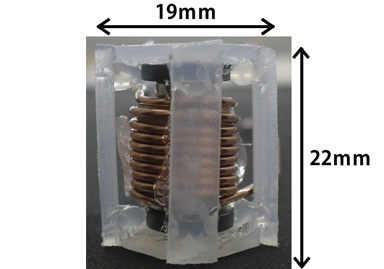
Mikio Muramatsu
Department of Intermedia Art and Science
Waseda University
3-4-1, Okubo, Shinjuku, Tokyo 169-8555, Japan
Junko Kurosawa
Information Technology Research Organization
Waseda University
3-4-1, Okubo, Shinjuku, Tokyo 169-8555, Japan
Yasuhiro Oikawa –yoikawa@waseda.jp
Yoshio Yamasaki
Department of Intermedia Art and Science
Waseda University
3-4-1, Okubo, Shinjuku, Tokyo 169-8555, Japan
Popular version of paper 2pPPb32
Presented Tuesday afternoon, June 4, 2013
ICA 2013 Montreal
Since the bone-conducted sound vibration through a skull is conveyed to the cochlea directly, without passing through the eardrum, it is audible even for hard-of-hearing people whose inner ears are still normal. Nowadays, technology using bone-conducted sound is applied to headsets for mobile phones, headphones for listening to music, hearing aids, etc. Although a bone-conducted actuator is usually attached to the mastoid or antilobium, a tooth can propagate sound vibration to the cochlea efficiently, since a tooth is deemed as bare bone. It is a well-known fact that Beethoven, who had suffered from defective hearing, heard a sound with a vibration through a tact that he held between his teeth.
In this paper, consideration of a communication aid system focused on bone-conducted sound via teeth is investigated. Our aim is to use bone-conducted sound via teeth readily for a new communication aid system, not only for hard-of-hearing people but also for the robust. We have experimented with recording and hearing bone-conducted sound via teeth utilizing a mouthpiece form actuator with dental material. In the recording experiment, we also carried out an experiment to extract sound vibration through teeth when a subject produces a sound. Furthermore, unwiring the mouthpiece actuator was considered. In the hearing experiment, a sound localization experiment was conducted. According to the results of these experiments, we suggest a new communication aid system by means of bone-conducted sound through teeth.
We have suggested a communication aid system with bone-conducted sound through teeth. Figure 1 shows the actuator which people can hear a sound signal vibration through teeth with biting. A mouthpiece form actuator was produced with dental material as shown in Figure 2. The actuator has an advantage that it just fits the mold of each subject’s teeth. The actuator has two vibrators that use a piezoelectric device (25 mm long, 10 mm wide and 0.1 mm thick). When the actuator is put on a subject’s teeth, the two piezoelectric devices are located on each side of the second biscuspid and first molar tooth on the upper jaw.

Figure 1. Biting type actuator. The giant magnetostrictive material, ETREMA Terfenol-D is used. The material around the wire is EVA resin, which is not harmful for humans
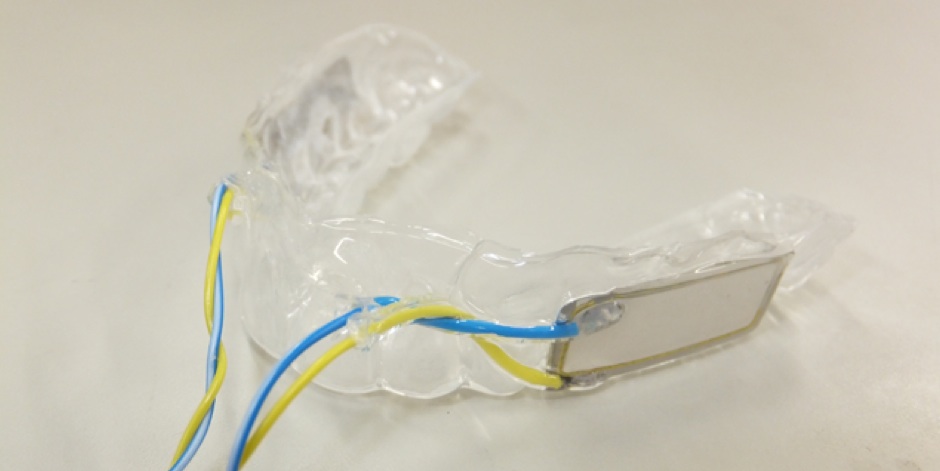
Figure 2. Mouthpiece form actuator. The piezoelectric device, Thrive OMR251005-U-210, is used. It is laminated by dental material formed teeth mark
We also conducted the experiment to observe the perception of hearing bone-conducted sound via teeth. In this experiment, we measured the threshold when bone-conducted sound through teeth is heard. Figure 3 shows the threshold we measured. It can be seen that the relative voltage level is comparatively low between 1000Hz and 4000Hz.
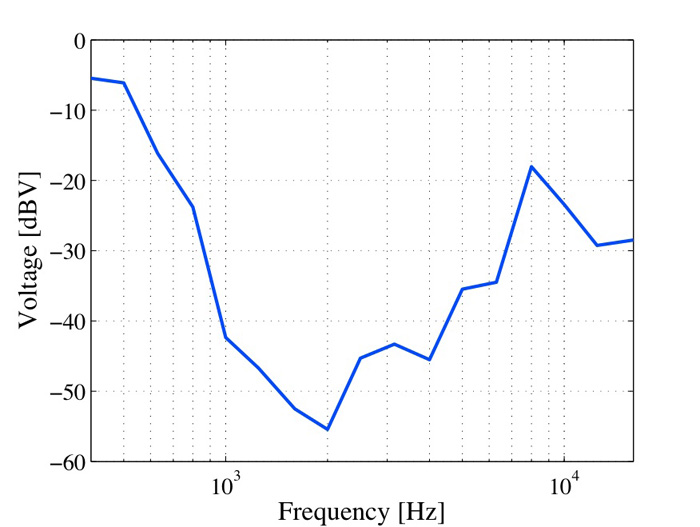
Figure 3. Threshold. X-axis is frequency and Y-axis is relative voltage level that reference voltage is 1.0V
The recording of bone-conducted sound via teeth was conducted by means of the same mouthpiece form actuator as a microphone. A piezoelectric device also picks up teeth vibration during phonation. Figure 4 shows the waveform of extracted teeth vibration when a subject pronounces “sakana”. The speech spectrograms are presented in Figure 5.
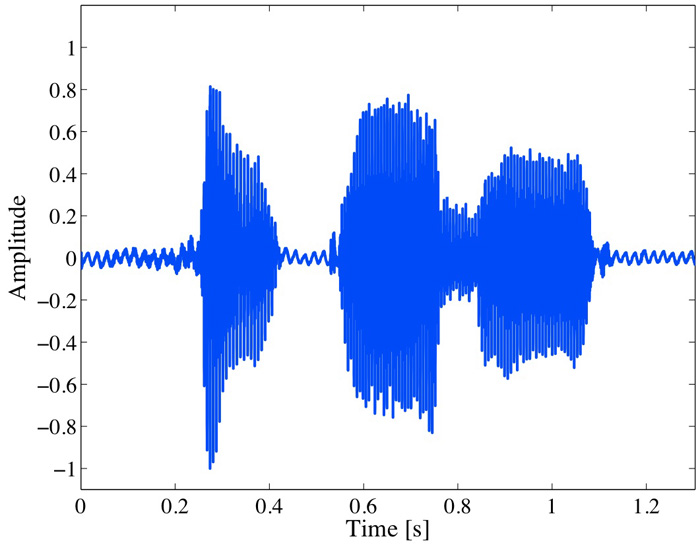
Figure 4. Waveform of “sakana”

Figure 5. Spectrogram of “sakana”. The color bar shows relative voltage level. The reference voltage is 1.0V
The experimental production of wireless actuator has been performed. Figure 6 shows the wireless system with electromagnetic induction, called hearing loop, and the prototyped actuator is shown in Figure 7.

Figure 6. Wireless system with electromagnetic induction
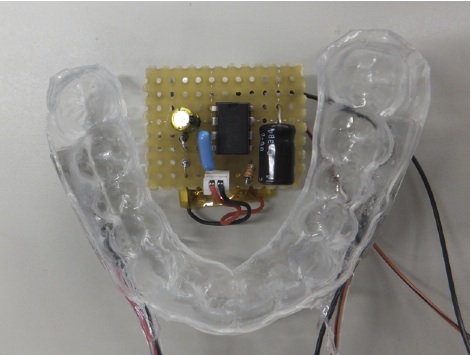
Figure 7. Prototype of wireless actuator. The wireless circuit equipped with telecoil is small enough to set in oral cavity
A sound lateralization experiment utilizing a mouthpiece form actuator was carried out in order to observe whether people can recognize the direction when they hear sounds through their teeth. We basically built up a perception of sound lateralization based on interaural differences of level, time, or phase. In this experiment, level difference of voltage, i.e. interaural level difference (ILD), is presented to a piezoelectric device on each side. Figure 8 shows the results of the experiments, which (a) is for speech and (b) is for white noise. From Figure 8(a), it is clear that the perceived direction is dispersed, but it could be made that a subject can perceive the direction roughly with hearing bone-conducted sound through teeth. On the other hand, Figure 8(b) describes how a subject can perceive the direction of presented white noise signal accurately.

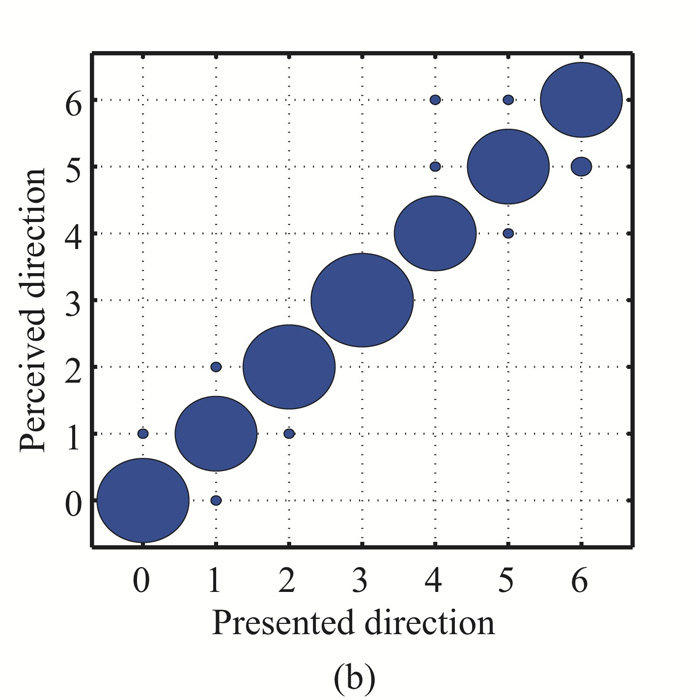
Figure 8. Results of sound lateralization experiment. (a) is for speech and (b) is for white noise. X-axis is the number of presented signal. Y-axis is the number of perceived direction. The size of the circle is relative to quantities of responses
Communication aid focused on using bone-conducted-sound via teeth is proposed. The prototype of an actuator was produced and experiments wereconducted to confirm if utilizing bone-conducted sound through teeth is useful as a communication aid. In the measurement of extracting teeth vibration, teeth vibration can be converted to sound signal using the mouthpiece actuator. The prototype of a wireless actuator equipped with a telecoil is also produced. Using the prototype product, it can be applied to hearing loop system as same as T-mode for hearing aid. In addition, sound lateralization experiment shows that a subject can recognize right and left by means of bone-conducted sound via teeth. It is clear from the experiment with white noise to perceive lateralization accurately. In the future, we will aim to achieve the practical use of this system.